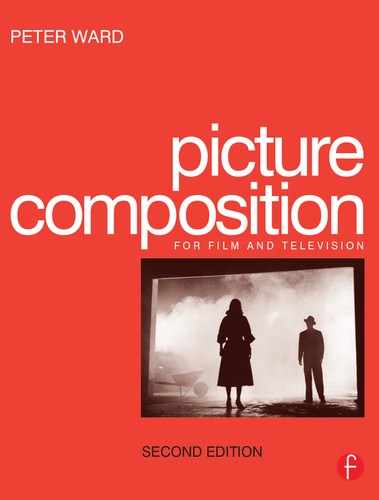Endnote
It is natural, when training for a craft or a new skill, to search for underlying rules and guidelines – to look for certainties in order to master and to measure the amount of progress achieved.
Camerawork is basically a craft but with its top practitioners it shades into a highly original, creative activity. Between learning by rote and the wilder excesses of individual subjective expression, a balance has to be struck between the dogma of ‘always do it this way’ and the anarchy of ‘I don't quite know what I am trying to achieve, but out of this creative muddle new, original work will materialize. I hope!’.
This book has discussed the constituent parts of composition. From the theory of perception to the inherited values of previous ‘visual problem’ solvers there is a wide range of advice and opinion on how to achieve good communication. Composition is central to this process and touches nearly all aspects of film and television production. To rewrite Marshall McLuans’ media catch-phrase – the image is frequently the message.
What has not been discussed so far, is the part played by individual innovation in the act of framing up a shot. The imaginative leap made in the early days of film making when cameramen and directors devised and invented new visual ways of telling a story has been continuously expanded and added to by many cameramen following in their footsteps.
The television pioneers faced similar challenges with the need to adapt and develop multi-camera technique. The unpredictability of the early electronic camera created a demand for reliability and certainty. The engineering quest was for equipment of high specification coupled with a cost-effective life before being superseded by the next innovation.
Cameramen also have a keen interest in reliable equipment but frequently need to add another ingredient to the mixture. Good camerawork, as well as requiring a technique that guarantees a quality product, also, at times, involves taking risks. There are occasions when no previous experience or guidelines can help in resolving a particular visual problem.
In live television camerawork, operational decisions have to be made in seconds. The cameraman chances his arm and goes with what he feels is the relevant action. If he/she is right, then the result on screen is so obvious, that a viewer is not even aware that a split second decision has been made. If he/she is wrong, the same viewer may be critical of the blunder. These visual decisions are made in seconds. The critic of these activities frequently have days, weeks or even months to make their own crucial decisions – and they can still get them wrong!
Cameramen have to live with uncertainty. It is part of the job. The programme may not be as good as they hoped, the film does not quite come off, etc., but stepping into the unknown – risk taking – is part of the everyday activity faced by production crews. There can never be absolute certainties about TV and film production technique and frequently, the new and the original are resisted until they achieve critical or financial endorsement.
Innovation, original work, is often the product of maverick thinking. A particular craft technique continues to be practised until someone demonstrates that it is based on unexamined assumptions. There are other ways of doing it.
It may have been implied in this discussion on composition that there is a clear, unequivocal method of work, but the creative urge to experiment, to try something different is as valuable as the need to have knowledge about the bricks and mortar of camerawork. Usually, innovation only succeeds if it takes off from an established craft skill. Genius is a commodity that is always in short supply.
The ability to create interesting and arresting compositions lies at the heart of the cameraman's expertise. The range and variety of outstanding camerawork testifies to the individuality present in the practice of the craft of camerawork. It would seem presumptuous to attempt to lay out principles and guidelines that would embrace such a diversity of practice. Technique changes too rapidly to attempt to set a discussion on composition in ‘tablets of stone’.
Perhaps an eminent writer on the subject, Sir Charles Holmes (Notes on the Science of Picture Making), should have the last word:
It cannot be too definitely stated at the outset that a knowledge of principles is no substitute for invention. Principles themselves cannot create a work of art. They can only modify and perfect the vague pictorial conception formed in the artist's mind, which are the foundation upon which he builds.
